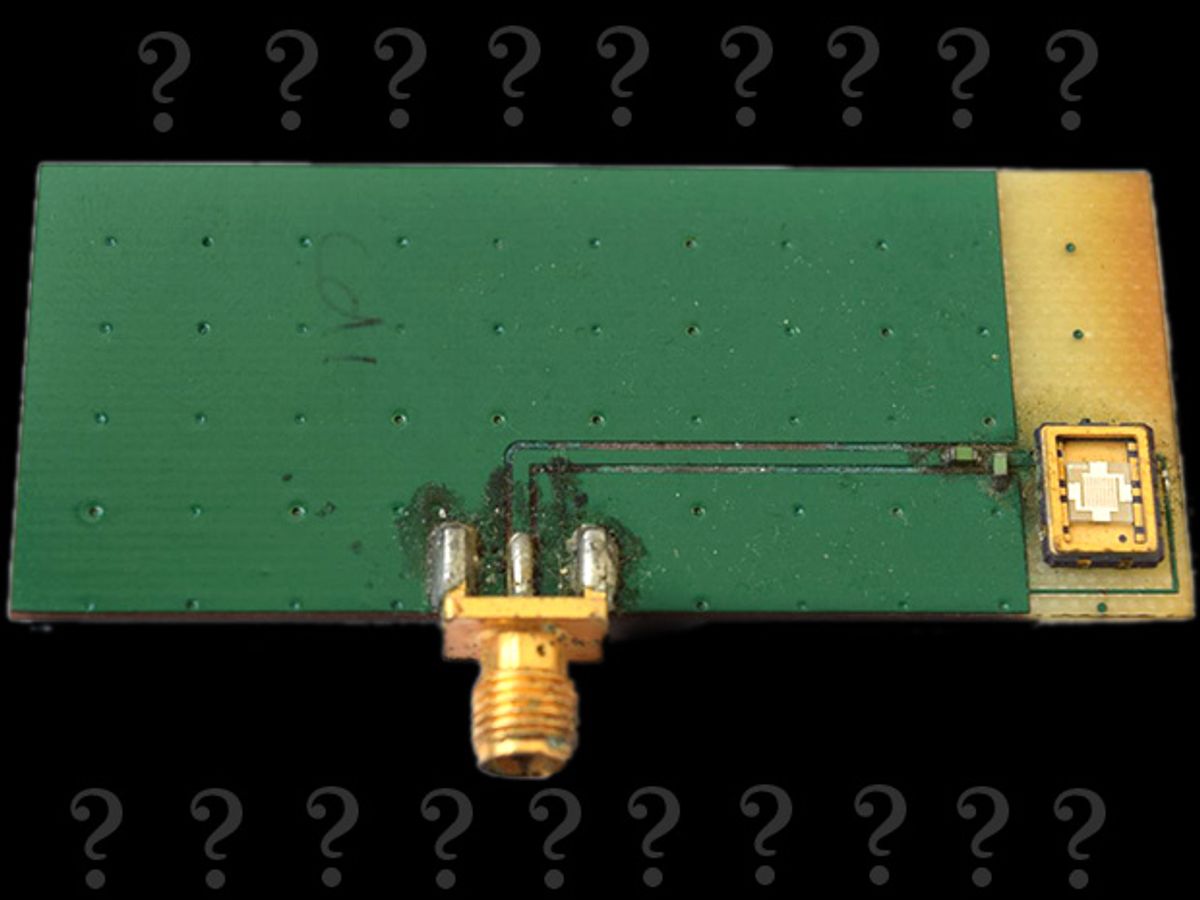Earlier this year we told you about what might be a solution to a big problem in wireless communications: In order for an antenna to transmit sufficient power you need it to be comparable in size to the wavelength its sending. That’s hard when you’re constrained by the size of a smartphone or smaller gadget.
Two engineers at the University of Cambridge, Dhiraj Sinha and Gehan Amaratunga, published a solution in April in Physical Review Letters: They created a small antenna made from a dielectric material that can fit on a chip. But now experts at Aalto University, in Finland, claim that it can’t work.
The Cambridge engineers connected only one contact of a piezoelectric filter to the transmitter circuitry, while the other contact was left floating. That is, the piezoelectric filter was excited in an asymmetric mode. The authors of the paper explained the fact that the small antenna could deliver a lot of power by assuming that a concept called “broken symmetry” caused the filter to resonate strongly.
The concept of symmetry breaking, now more than 60 years old, has been successfully used to explain or describe phenomena in particle physics. But its application to electromagnetism was not appreciated by some.
Constantin Simovsky at Aalto University in Finland, and coauthors at ITMO University in Saint Petersburg, Russia and the Australian National University in Canberra published a comment on the paper in PRL in which they strongly criticize using the concept of broken symmetry in relation to resonating devices such as antennas.
"Asymmetry is not required for efficient radiation, there are symmetric antennas which radiate quite nicely," says Pavel Belov, a physicist at ITMO University and one of the authors of the Comment. "In this case, symmetry breaking is not meaningful, and there are classical explanations. There is a simple explanation of better impedance matching between waveguides and antenna," says Belov.
Sinha and Amaratunga disagree. They argue that the authors of the Comment have misunderstood the idea of asymmetry, confusing geometrical asymmetry of an antenna with an asymmetric electromagnetic excitation fed to the device. The latter results in the symmetry breaking of the electric field and in radiation.
"We have completely different viewpoints, they have just isolated the concept of geometric symmetry, and they say that geometric symmetry is not needed for radiation,” Amaratunga quotes from the paper they have published as a reply in PRL. “The concept of explicit symmetry breaking is not limited to geometrical symmetries, a point on which Simovksi et al. have based their arguments on.”
Sinha compares the dielectric antenna, excited by an RF signal at one contact with a bell, hit by a hammer on one side: "You might have observed that hitting a suspended bell with a hammer creates sound, but hitting it with a hammer while holding the surface of the bell at the other side with the palm of hand, you will not generate a strong acoustic signal as a closed circuit is established limiting the outflow of energy into free space."
Sinha further explains that symmetry breaking does not mean destroying the geometrical symmetry of the antenna. "In fact, symmetry breaking is just the lowering of the order of symmetry, so symmetry is not lost completely. For example, the symmetry of a sphere can be broken to create a circle. Here, the 3-d symmetry is lowered down to 2-d or it is broken. But the structure still has symmetry," says Sinha.
The battle of minds is not over, “We are preparing a reply,” says Belov.



